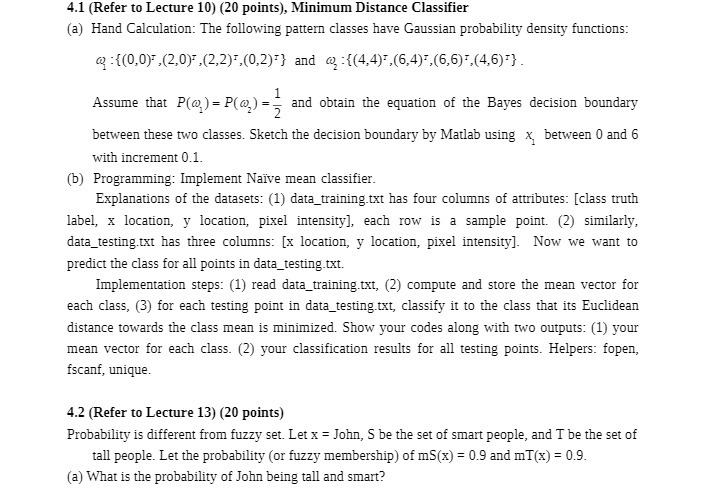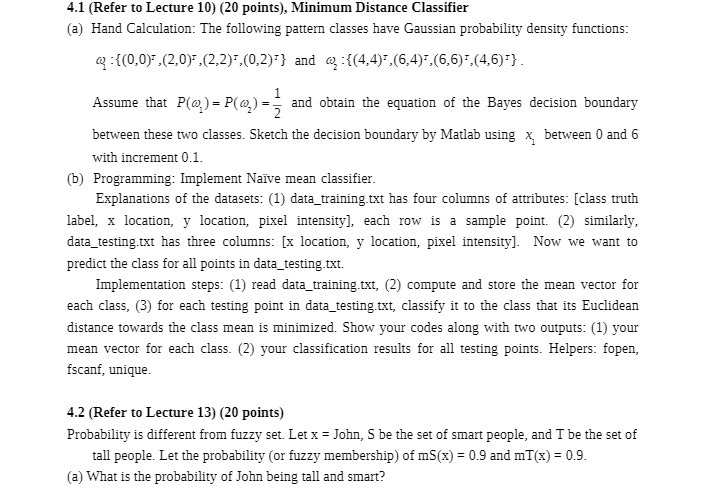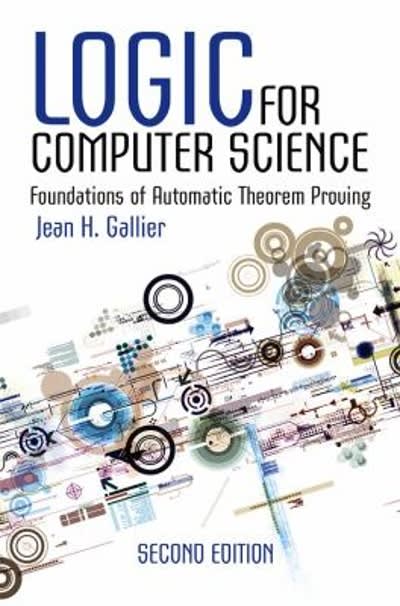Answered step by step
Verified Expert Solution
Question
1 Approved Answer
4.1 (Refer to Lecture 10) (20 points), Minimum Distance Classifier (a) Hand Calculation: The following pattern classes have Gaussian probability density functions: :{(0,0),(2,0),(2,2),(0,2)} and @


Step by Step Solution
There are 3 Steps involved in it
Step: 1

Get Instant Access to Expert-Tailored Solutions
See step-by-step solutions with expert insights and AI powered tools for academic success
Step: 2

Step: 3

Ace Your Homework with AI
Get the answers you need in no time with our AI-driven, step-by-step assistance
Get Started


